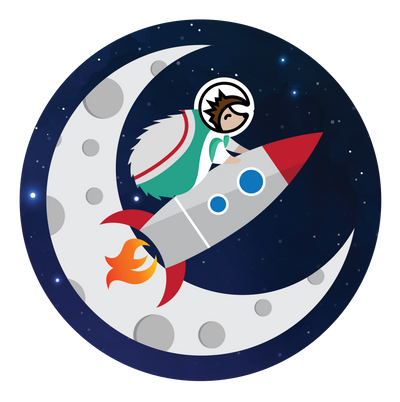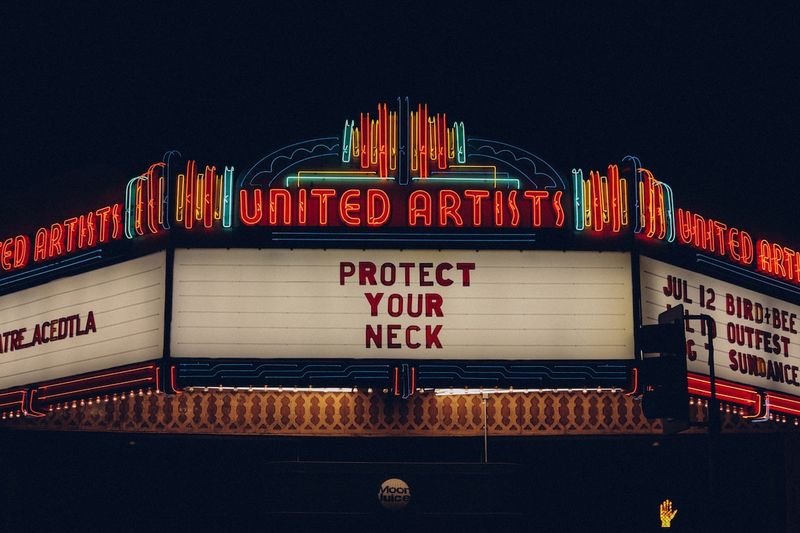Games are serious business — not just for the companies that make them, but also the players. Ethereum creator Vitalik Buterin was inspired by the famously addictive MMORPG World of Warcraft, when "one day Blizzard removed the damage component from my beloved warlock's Siphon Life spell," Buterin wrote. "I cried myself to sleep, and on that day I realized what horrors centralized services can bring."
Fast forward till now: Ethereum is kind of a big deal, and Buterin himself is almost a household name. NFTs took off in large part because of his invention, though the concept is embraced across much of the blockchain ecosystem. And gaming is one of the most popular proposed use-cases — see how everything comes full circle? Today in-game assets can be truly owned by players, just as Vitalik dreamed.
Raleigh Illgen (follow him on Twitter) connects the dots and introduces a few hopeful entrants from the crypto gaming space.
Playing with NFTs
NFTs have turned into a mega-mainstream phenomenon this year. An SNL sketch, CryptoPunks in Times Square, the Christie's $69 Million Beeple auction. They're everywhere and inescapable.
Since NFTs have started having an influence on The Great Game, it was only a matter of time until they started extending into one of our favorite kinds of simulation and simulacra: video games.
In-Game Economics
Economics is a complex topic, often considered boring by Econ 101 students, but at the heart of civilization is the pulsing beat of goods and services. From the dawn of money, these flows have dominated the fortunes of individuals, families, clans, and nations.
The existence of economic behavior in games is a natural extension of computers mirroring or simulating the "real" or analog world. Even the oldest PC and video games contained situations where they would collect some kind of currency or coin to exchange for useful items.
Economics x Gaming
One academic field with many applicable insights into games of all kinds (including economic ones) is game theory. Hence the name 😉 The field has fairly old roots but wasn't formalized until computing pioneer John von Neumann wrote a paper and co-authored a book on the subject in the early 20th century. Later in the 1950s, mathematician John Nash proposed what is now called as the Nash Equilbrium. It reframed the act of economic transactions by describing the outcomes of mixed strategies for any number of players in non-cooperative finite games.
Another concept related to games and the reasons why people play them, pioneered by Richard Bartle, is the idea that an engrossing virtual world experience should cater to four different types of players. Many of the current NFT game examined in this broad survey of the industry are often too narrowly focused on a single type of gameplay, but this will almost certainly be addressed soon.
A Very Brief History of Economics in Games
MUDs
The Massively Multiplayer Online Role-Playing Games (MMORPGs) of today trace their roots back to Multi User Dungeons (MUDs) from the pre-internet network known as ARPAnet. MUDs are text-based adventures, where players explore, fight, and collect loot from various locations using a set of text commands. While these adventure games often lacked any economic component to in-game decisions, even eschewing the obvious currency, gold, in many cases, they set a precedent for creating fun and engaging worlds where players often focused on collecting digital items.
It wasn't long before video games began including virtual stores.
MMORPGs
Ultima is probably the clearest tipping point of when digital markets for virtual objects were here to stay. It was arguably the first MMORPG to feature an economy driven entirely by its player base. In-game resources like ores, equipment, and gold traded relative to their scarcity rather than being dictated by the developers managed via NPC merchants.
While most items would be priced in gold, any item could be bartered for against any other, but it was the in-game real estate that drove the economic behavior out of the game. Real estate became extremely scarce as the popularity of the game rose with all the available land taken up across all the game's different servers. Eventually, the scarcity of available plots began driving players to conduct trades via eBay sales.
World of Warcraft — yes, that notorious game — marks the point when a virtual game economy began generating significant "real-world" economic activity, despite being against the terms of service. The history of the economics of WoW foreshadows the advent of cryptocurrency and NFTs as well as highlights many of the problems it solves. The very existence of Ethereum itself may be traced to a specific WoW nerfing event.
Many of the game's rarest and most sought-after items required huge sums of gold to acquire through the first few expansions. To speed up the acquisition of these rare items, one could, at the time, purchase gold on eBay for real dollar bills, a relatively new concept at the time. This gave rise to the Chinese "gold farms" — operations that paid insignificant amounts to Chinese players would grind for hours to obtain gold and other items for sale to Western players who would pay huge markups to intermediary third parties. These gold farms were often marginally ethical given the disparity between the labor cost to gold price 10-20x higher and, in at least one case, using slave prison labor.
Rise of Virtual Markets
As MMORPGs became more popular with even more complex economies like Everquest and Eve Online, all this economic activity attracted began to attract people looking for an opportunity to profit. One such person, now a major figure in the cryptocurrency industry and well known as a promoter for the EOS project, was Brock Pierce. Before the buying and selling of virtual goods became a totally normal occurrence, Brock played a pivotal role in the virtual economy of Everquest.
It would also be negligent to leave out the fact that the first massively successful Bitcoin exchange Mt. Gox started as a Magic: The Gathering Online eXchange. Trading cards are an example of a mostly fungible commodity "token," and their connection to the rise of the first cryptocurrency is less of a coincidence than might be expected.
One of the last major precursors in the buildup to the current NFT gaming craze worth mentioning was the rising popularity of paid cosmetic skins. Dating back to 2012, Counter Strike: Global Offensive began its key/crate system where users were rewarded with keys that would unlock a corresponding crate containing a skin that would change the appearance of a player's gun in the game. The prevalence of loot boxes in many modern games is probably attributable to CS:GO's success, and definitely helped get players more comfortable with the idea of buying purely virtual goods.
A Broad Survey of NFT Games
Axie Infinity
Axie Infinity is the current elephant in the room. It's a Pokémon-inspired universe per the whitepaper. Anyone who remembers the original hype from the release of Pokémon can see the clear parallels, both in-game mechanics and player enthusiasm.
Players fight and breed cute monsters called axies. The game uses what could be called a pay-to-play-to-earn (P2P2E) model. Players need to purchase at least three axies to form a team where they battle other players (PVP) or vs computer-controlled opponents (PVE). Similar to Pokémon, Axies have different types which have strengths and weaknesses versus other types. They also have various body parts which impact their stats and skills.
Rewards for battling are based around the acquisition of Smooth Love Potions (SLPs) which can be bought and sold independently as their own token. Axies can be bred a certain number of times for an increasing amount of SLPs and AXS up to their breeding limit. The number of times an Axie has been bred consequently affects its value significantly. New Axies can then be sold as a source of revenue or used in battle to further increase rewards.
CryptoKitties
While only marginally a game, CryptoKitties was a pivotal moment in NFT gaming history. Far ahead of the current NFT craze, CryptoKitties launched at the height of the crypto mania in December 2017, eventually making up as much as 15% of the entire Ethereum transaction volume.
In the tsunami of worthless ICO launches with teams launching vaporware on plagiarized whitepapers, CryptoKitties boasted a unique use-case for Ethereum: a game based around the ownership of a digital asset that you could buy and breed. Each CryptoKitty possesses a set of genetic traits which influence its appearance and the appearance of its offspring. While genetic algorithmic art is old hat now, it was the first on-chain example and an important part of NFT history.
Splinterlands
The third most popular game by monthly user metrics, and probably the most popular NFT trading card game at the moment, is Splinterlands, which runs on the Hive blockchain. Since trading cards are a natural extension of NFTs, it was inevitable someone would develop one. The in-game currency used to purchase cards are Dark Energy Crystals (DEC).
It appears similar to most Magic: the Gathering clones — cards are divided into six factions or "splinters." They have a mana cost to deploy. There are two main types of cards, summoners and monsters, with summoners being used to summon monsters. One advantage of NFTs compared to regular trading cards is that the cards can have unique aspects that change over time; in this case they gain experience in each battle which carries into future fights.
Star Atlas
One of the more ambitious games in development is Star Atlas, a space sim x grand strategy P2E game on the Solana blockchain. The general idea is mining and exploitation of other planetary resources, which will trade freely against the in-game currency $ATLAS. At the moment future players are limited to only buying and selling NFT ownership of ships, mining claims, and a somewhat nebulously defined "access levels."
Players will interact and join one of three factions, explore a large universe where every stellar body is visitable, and collect resources to skill up their character or sell on the open market. In many ways it sounds similar to EVE Online. Governance of the project will be mediated via another token the Star Atlas Dao, $POLIS, making for a very different player/developer relationship than traditional MMOs.
Development may take some time though as the team plans to implement AAA-level quality graphics and gameplay.
Alien Worlds
The most popular game on the Wax blockchain is Alien Worlds, with some parts also running on Ethereum and Binance Smart Chain. In many respects it is similar to Star Atlas, but a much simpler version without the AAA 3D world on their roadmap. Players can own land, which is necessary to mine Trillium, the in-game currency, which in turn can be staked to earn more rewards. A fighting game is also planned but no details are available at the moment.
Nyan Heroes
Currently in development, Nyan Heroes minted 11,111 NFT feline robot pilots that will eventually be used in a 3D shooting game. The FAQ indicates the game will be free to play suggesting owning a minted hero won't be necessary and will use the P2E model. This project is a good example of a situation where high trust in the implementation team is required since their roadmap doesn't project the game to launch until mid-2022.
0N1 Force
Lots of NFT collectibles have been attempting to graft some kind of gaming experience onto what is essential a non-interactive contract to begin with. A good example is 0N1 Force, a stylish carton avatar that skyrocketed in value during the NFT bull market.
With its developer roadmap fully completed, the team has tried pivoting focus to creating a collaborative roleplaying experience. While entirely possible that some kind of further development may make for a more structured gameplay experience, I would be hesitant speculating on any NFT collectible trying to pivot to gaming that can't ship something quickly.
Loot
One of the NFT collectibles worth mentioning that may eventually grow into some kind of game experience is Loot. Created by the founder of Vine, Dom Hofmann, and announced via tweet, Loot is a collection of 8,000 text lists made of random assortments of various objects you'd find in a typical medieval RPG. Incredibly simple in concept, and immediately spawning tons of copycat projects given the low implementation effort necessary, Loot's floor price skyrocketed to an average price of over 20 ETH in early September and has since retraced nearly 90%.
While significant potential remains with a very motivated community of holders trying to determine how to further the project, this is definitely another speculative token. As an example of a community-developed extension, an ERC 1155 contract has been created to unbundle and re-bundle the individual items that make up each list. A web interface is available at LootLoose.

Blankos
I personally installed this early-access title and gave it a try. It's a 3D platformer where the player inhabitants which are little plastic figurines (minifig lookalikes) awake in a room of everyday objects that tower over the player. From there, the player is guided by a shaman character who helps the player navigate their way out of the abandoned room to reach "The Junction," the main exploration area during the current early-access stage. There's a cast of cute, cartoony characters plus a great soundtrack and sound effects based borrowing heavily from hip-hop culture and turntablism.
The gameplay is a very casual F2P experience where players are dropped into mini-games which appeared to include player-created games. The minigame selection appears to be entirely random as of the mid-November 2021 state of the game, but perhaps that will change in a later update. Most of the minigames were racing, with a shooter mixed in.
The NFT aspect appeared to be entirely limited to cosmetic skins and accessories. Signup included a free NFT drop at the time of writing (I got a pair of sunglasses for my Blanko), but they could be expanded to the skills/ability slots later.
Decentraland
There are also some projects leaning into the "metaverse" concept and downplaying the game aspect. Decentraland makes a somewhat dubious claim to be "the first virtual world owned by its users." Second Life might have a better chance at holding that title, but there are certainly older examples as previously mentioned.
Decentraland is a free-to-play (F2P) experience, and a guest account can be created without any wallet integration. While it's a virtual world that has no structured game elements outside of some minimal quests at the moment there are, however, several games built on top of Decentraland as well as virtual casinos utilizing NFT wearables. An NFT market built by Decentraland makes finding land and wearables easy, but many are also available on other platforms like OpenSea.
One downside of their tech is that the application only runs in the browser at the time of writing. Newer machines should be able to render the 3D world without trouble, but older machines may struggle with limited hardware acceleration available.

Sandbox
One last virtual world, about to launch its alpha and is seeing rapidly appreciating asset prices, is The Sandbox. Another metaverse concept, The Sandbox is a 3D voxel world made up of cosmetic NFTs and $LAND tokens which correspond to digital real estate. The currency token is $SAND and there's a 1000 token minimum required to get an alpha pass, making it a little expensive at current prices.
One interesting aspect of the user-generated content is that players will be able to directly import voxel assets from Minecraft.
Proceed with Caution
NFT gaming is likely to continue and exert a greater influence on the industry in the future, but it's just as crucial as ever to thoroughly research projects before committing to them. With big VCs like Andreessen Horowitz investing in organizations like Yield Guild Games, an inevitable shift to these new models is underway.
Many projects are, without question, low-effort cash grabs. Others are outright rug-pulls like the recent Squid Game token scam, which touted a P2E mechanic to earn a second token necessary to sell the initial SQUID token, eventually causing a liquidity trap. The head of gaming at Microsoft, Phil Spencer, is naturally hesitant of jumping on the NFT trend.
Another reason to exercise caution is the complicated tax reporting requirements that may be incurred by earning virtual currency, especially for US citizens. Earning virtual currencies with low market caps which are naturally more volatile may be difficult to accurately gauge their true fair market value adding yet even more risk.
If you do decide to jump in and see what these emerging gaming paradigms look like, make sure to do your due diligence before committing significant funds. DappRadar now has a games category which can help you gauge the popularity of various projects relative to each other. Make sure to scan the social media accounts of the project, its proponents, and perhaps the team members as well. Also hop in the Discord to try and assess the true level of community participation.
While many developers, players, and investors are enamored with the application of new shiny technology to the ancient art of gaming, it makes sense to proceed cautiously. The advent of pay-to-win was in many ways a regressive step in gaming history, and blockchain games seem dangerously tilted in that direction.
While player ownership has the potential to empower gamers making them even more engaged in the virtual worlds they inhabit, it has significant potential to hamper the video game industry driving publishers to further pursue dark patterns like aggressively pushing microtransactions and using dopamine-hacking attention monopolization mechanisms.
The inability of many in tech to recognize dystopian omens is on clear display when players are reduced to revenue streams, and the role of games as engaging and entertaining ways to pass the time, even to explore ideas about the "real" world, is forgotten.
Did you learn something? Follow Raleigh on Twitter, check out his blog, and of course subscribe to the Hedgehog newsletter for more!








